Becoming-Art: Art Trends in 2024
- by Nkhensani Mkhari
----------
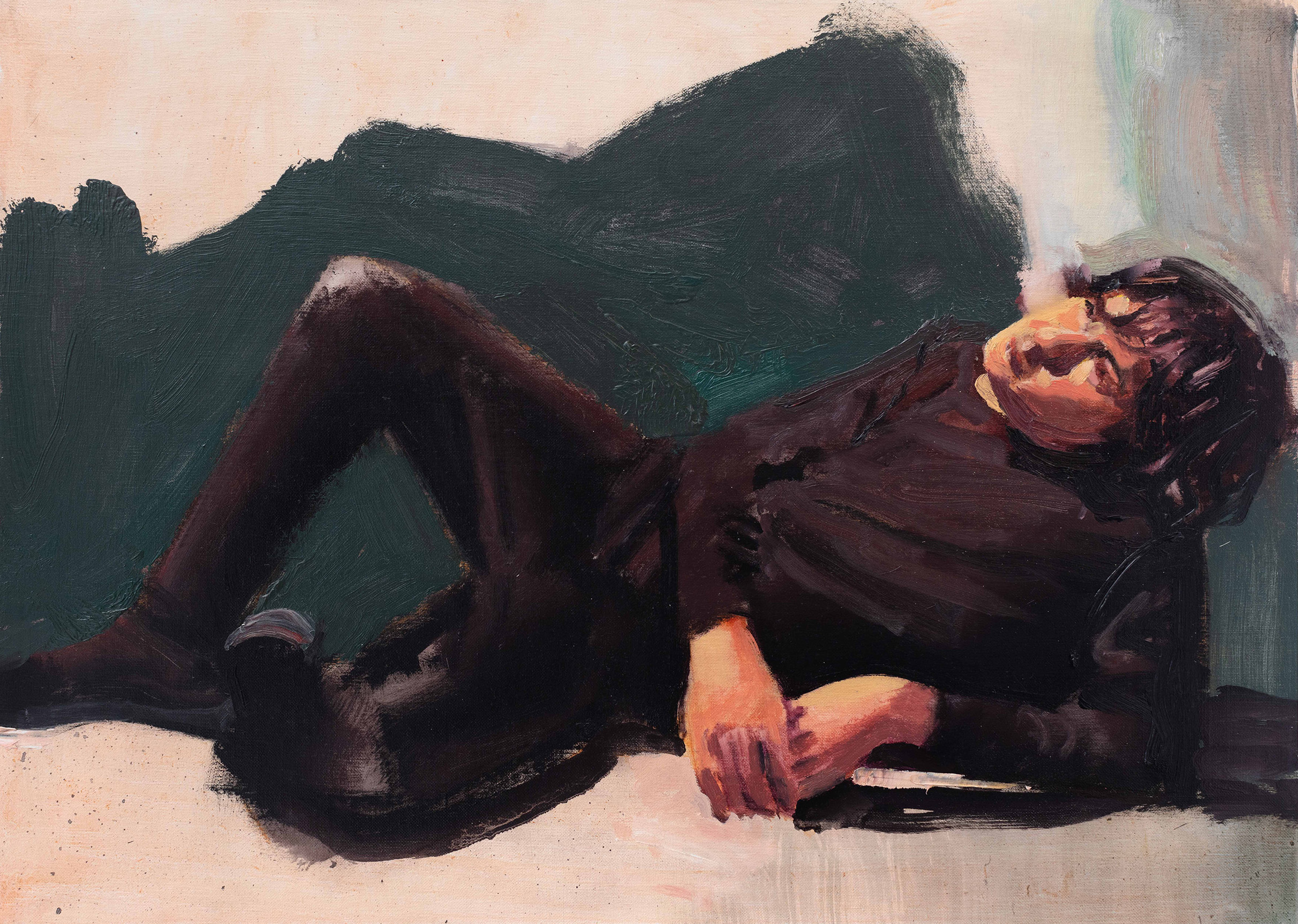
Ian Grose, ZB, 2023, Oil on linen laid on board, 43cmx59cm, from Grose's solo show 'People and Time' Courtesy of Stevenson Gallery
The art world in 2024 is poised for a significant shakeup, marked by several key trends emerging from the tremors of 2023. Independent institutions are gaining momentum, offering platforms for diverse voices and solo narratives to take centre stage. Gone are the sterile white cubes; these self-made hubs pulsate with disruptive energy, challenging traditional norms and amplifying the unheard.
Within this vibrant landscape, solo exhibitions make a comeback, asking artists to craft poignant narratives with resonance. Their vulnerabilities become shared tapestries, connecting artist and audience through the intimacy of human experience. But 2024 isn't just about whispers – it's a whirlwind of emotions. Hypersentimentalism takes hold, echoing the move towards nuanced exploration of intimate experiences within micro-communities. These intricate figurative portraits emerge amidst the algorithmic echo chambers of our social realities, embodying both content and feeling.
Citation is back. Forget clean breaks and origin stories whispered in sterile museums. Art's a tangled thicket, roots snaking back to the roots of other trees, branches intertwined in a riot of colours. Citation isn't just pointing fingers, It's about the stutter and stammer, the unfinished sentence, the space between notes where the real music lives.
The art world's buzzword might be "care," but is it more than talk? The pandemic exposed institutions' shaky foundations, urging a critical look at ethical practices and political implications. But will lofty proclamations bridge the gap to tangible change? We need institutions to shed superficiality and truly embody care, not just discuss it. From shifting power dynamics to embracing real solidarity, the question remains: is the art world ready to walk the walk, not just talk the talk?
- Self-Instituting: Defying Conventions, Redefining Curatorial Boundaries
This past year we saw the rise of independent spaces with the likes of Under Projects, NGO, FEDE amongst others shaping artistic discourse and providing new interdisciplinary collaborations, institutional strategies and models from the periphery. These spaces provided a fresh and nuanced perspective outside of the market. I think this movement towards ephemerality and independence signifies a paradigm shift is underway as artists and curators embark on a journey of self-instituting, challenging the very essence of institutional stability and the art world's unhealthy obsession with permanence. By questioning the predefined roles of curators and institutions, art workers are embracing the freedom to corrupt expectations. This trend redefines the dynamics between creators and institutions, granting artists greater agency in shaping their narratives and challenging established norms.
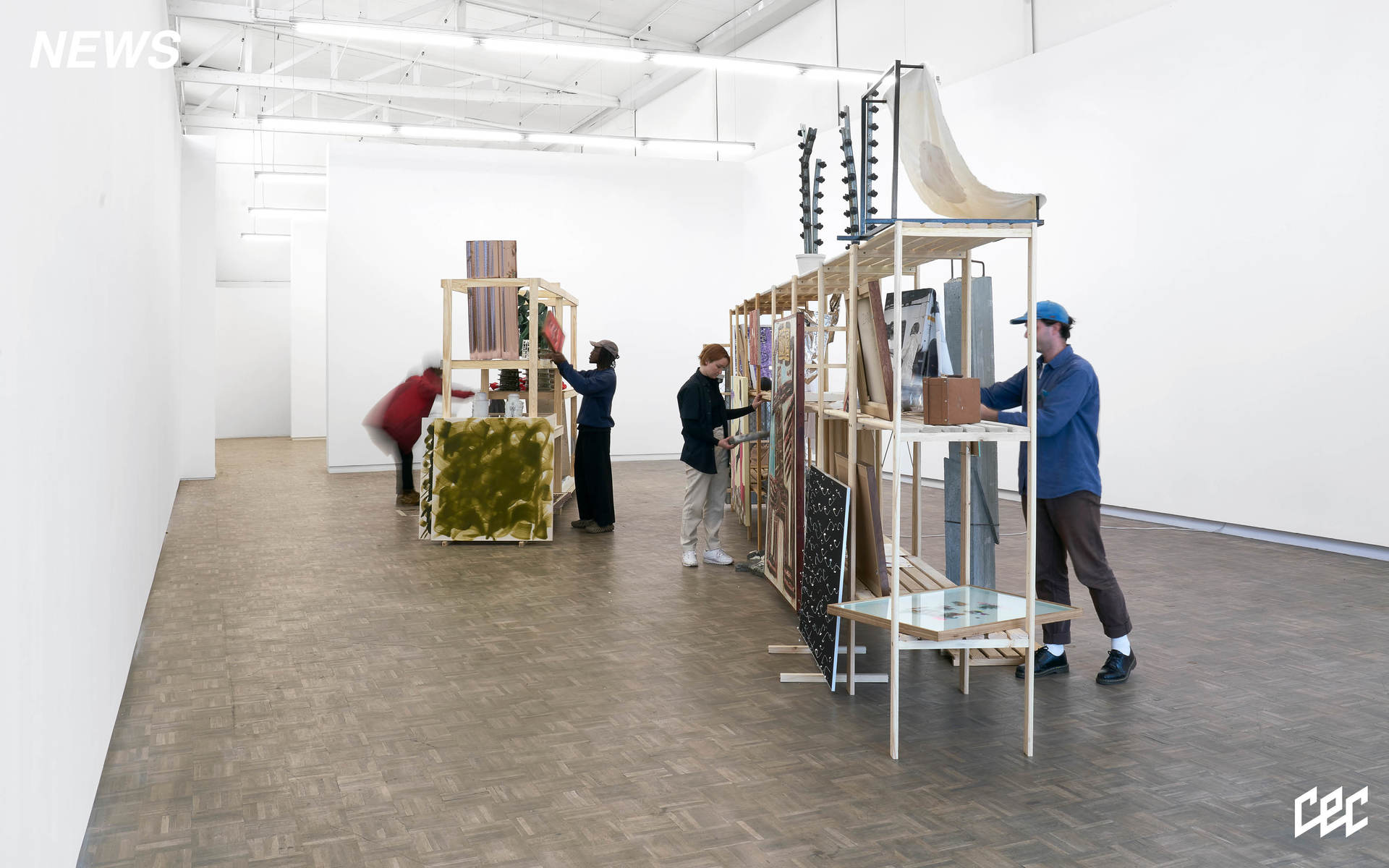 FEDE x Under Projects ,collaborative showcase, 'Fullhouse at blank projects CEC
FEDE x Under Projects ,collaborative showcase, 'Fullhouse at blank projects CEC
- Return of the Solo
This past year we saw the return of Solo exhibitions from the group exhibition saturated scene catalysed by the constraints of the COVID19 pandemic. In the ‘thematic renaissance’, solo exhibitions resurge as a platform for artists to amplify their individual narratives. Each manifests as a bespoke odyssey into the artist's idiosyncratic vision, instigating an intimate discourse between the curator, the artist and the audience. This resurgence not only venerates the singularity of artistic voices but also catalyses a revision of the conventional group exhibition paradigm, fostering a heightened personal entanglement with the artist's oeuvre. The resurgence of Solo Exhibitions might be a vital respite amid the deluge of social media and image saturation we’re faced with every day.
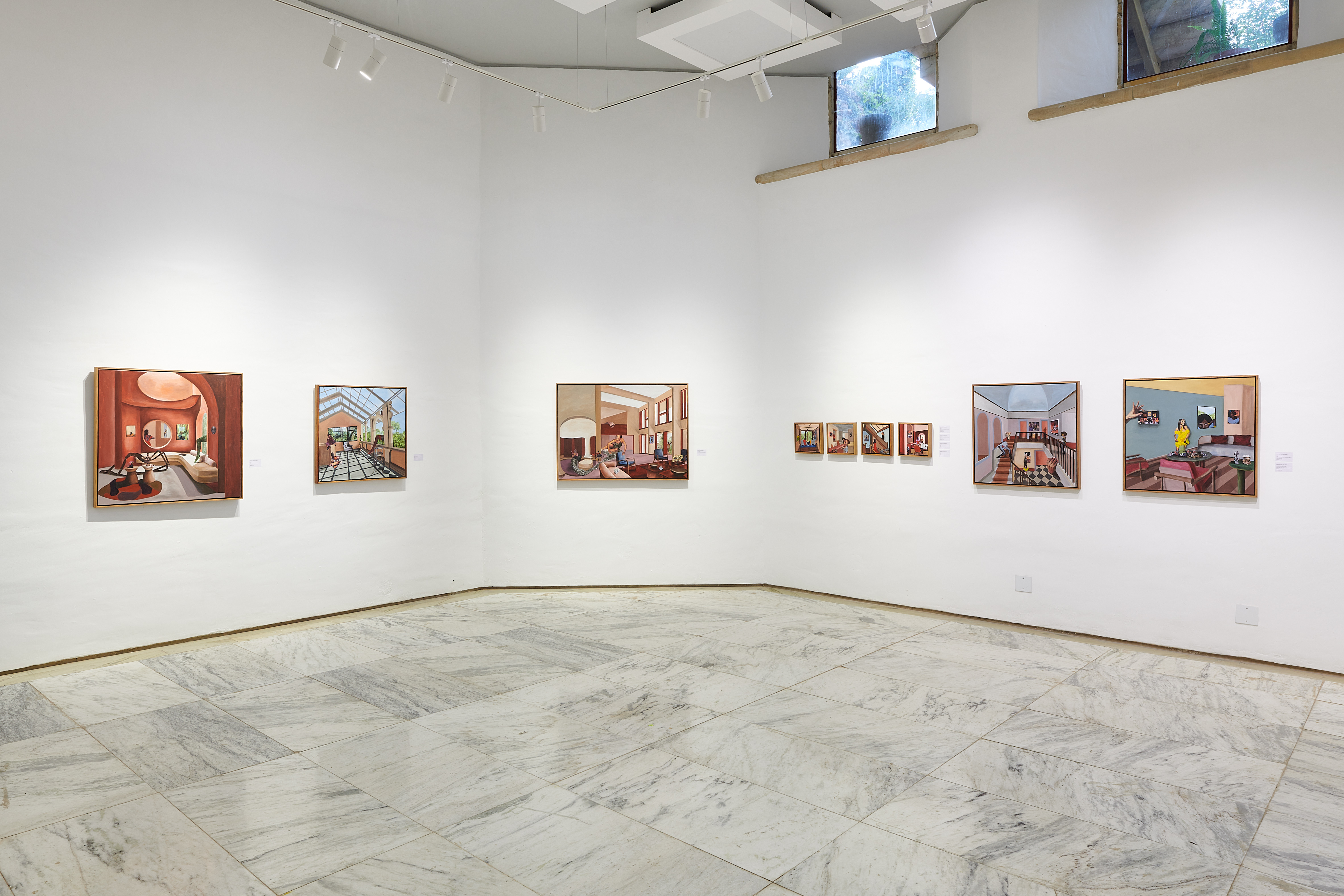 Cinthia Sifa Mulanga's solo exhibition 'Giants' and Latitudes Centre for the Arts (LCA), photography by Anthea Pokroy
Cinthia Sifa Mulanga's solo exhibition 'Giants' and Latitudes Centre for the Arts (LCA), photography by Anthea Pokroy
- Hypersentimentalism
During a podcast I listened to recently, Artnet's Kate Brown identified a new trend in the contemporary art scene dubbed ‘Hypersentimentalism’. In my understanding, the enigmatic allure of this movement lies in its meticulous exploration of intimate relationships, finely coded like a video game Easter egg for those who belong to a specific in-crowd or aspire to do so. This wave of figurative portraiture emerges against the backdrop of our algorithmically driven social clusters. These paintings act as both content and sensibility, fostering a deep connection with micro-communities while simultaneously catching the eye of those who may not be privy to the nuanced details. In a world inundated with targeted marketing and online polemics, hypersentimental painting offers an antidote—an ephemeral respite that prompts us to ponder what we truly desire: each other. The desire to showcase quotidian moments and depict those we care for becomes a powerful counterpoint to the fatigue induced by a decade dominated by virtual interactions and digital noise.
Now, some might ask, what's the difference between hypersentimentalism and homage? hypersentimentalism is like a graffitied alleyway, where cryptic murals whisper intimate secrets to the in-crowd. It's all about those raw, fleeting moments in your chosen family, painted with coded references only you and your crew understand. It's a middle finger to the digital scroll, a celebration of real connection in a world of virtual noise. Homage, on the other hand, is like a grand cathedral, echoing with the glories of the art world's past. It's tipping your hat to the masters, building monuments to their genius with every brushstroke. Think historical context, intellectual engagement, and a legacy that lingers long after the paint dries.
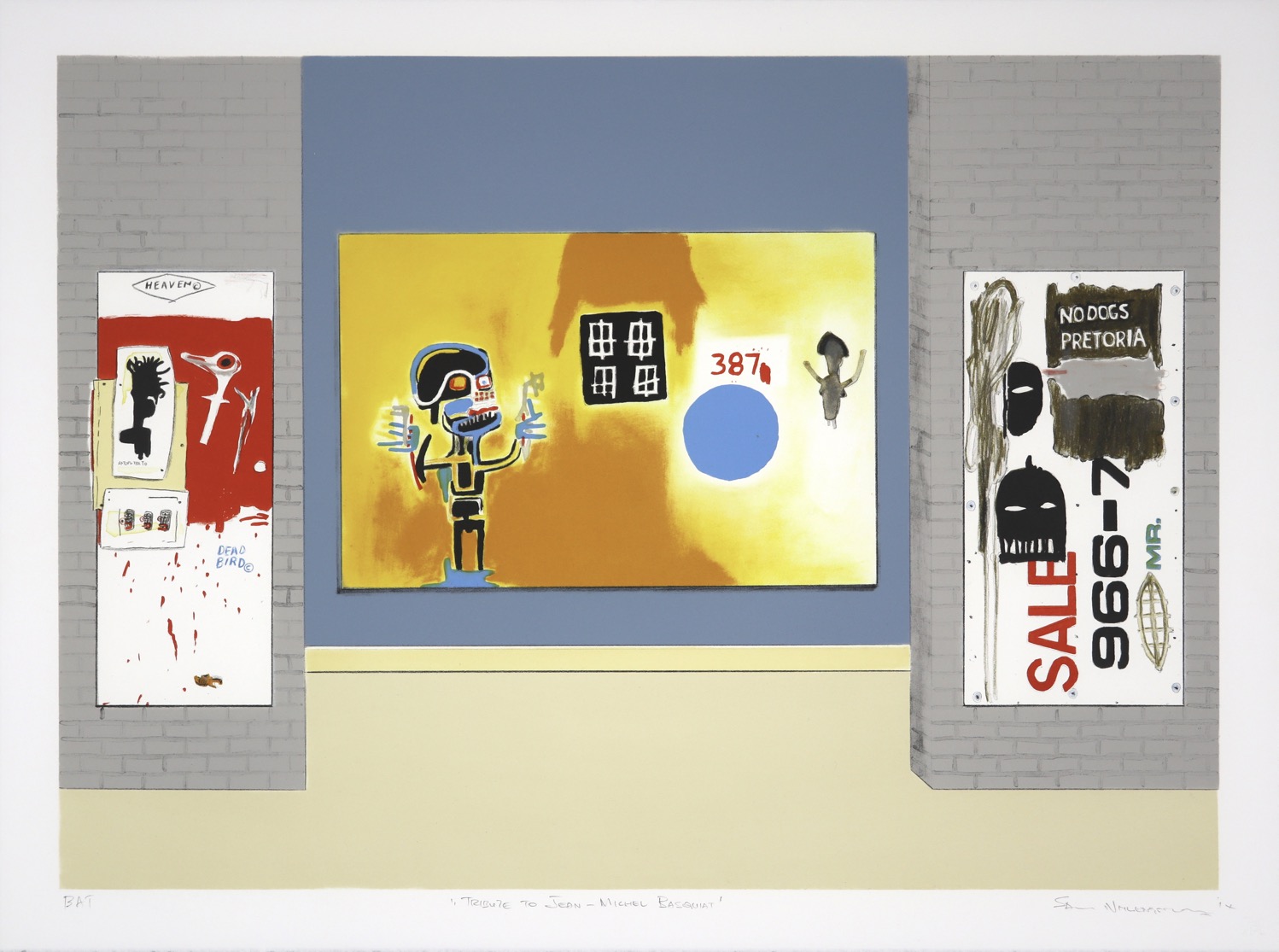 Sam Nhlengethwa, Tribute Interior Basquait, Courtesy of The Artists Press
Sam Nhlengethwa, Tribute Interior Basquait, Courtesy of The Artists Press
- New Cites
As part of their paracuratorial program for Gabriel Goliath's solo exhibition Goodman Gallery hosted a conversation between the artist and writer Maneo Mohale. In the conversation a curious current drew my attention: the rising tide of citation. No longer a mere footnote, referencing and recontextualization are blossoming into potent tools, wielded by curators, artists, and audiences alike. For, as Nicolas Bourriaud presaged in his prophetic "Esthétique relationnelle," contemporary art thrives on porous boundaries, where "everything is potentially relational."
For curators, citation becomes a radical act of inclusivity. Imagine exhibitions not as static tableaux, but as vibrant ecosystems, where past voices whisper through present forms. A Frida Kahlo photograph echoes in a Tony Gum silhouette, sparking dialogues across space and time. The audience, no longer passive observer, becomes an active translator, weaving connections between threads of influence. This porousness dismantles the traditional white cube, inviting marginalized voices to infiltrate the canon, their whispers amplifying into resonant shouts.
For artists, citation transcends mere appropriation. It's a dance of dialogue, a playful borrowing that expands the artistic vocabulary. Think of Bronwyn Katz sculptures, where discarded mattresses sing the blues of forgotten histories, or Billy Langas performances, where colonial narratives are unraveled and rewritten. These artists don't just reference – they collaborate, sparking conversations that reverberate beyond the gallery walls.
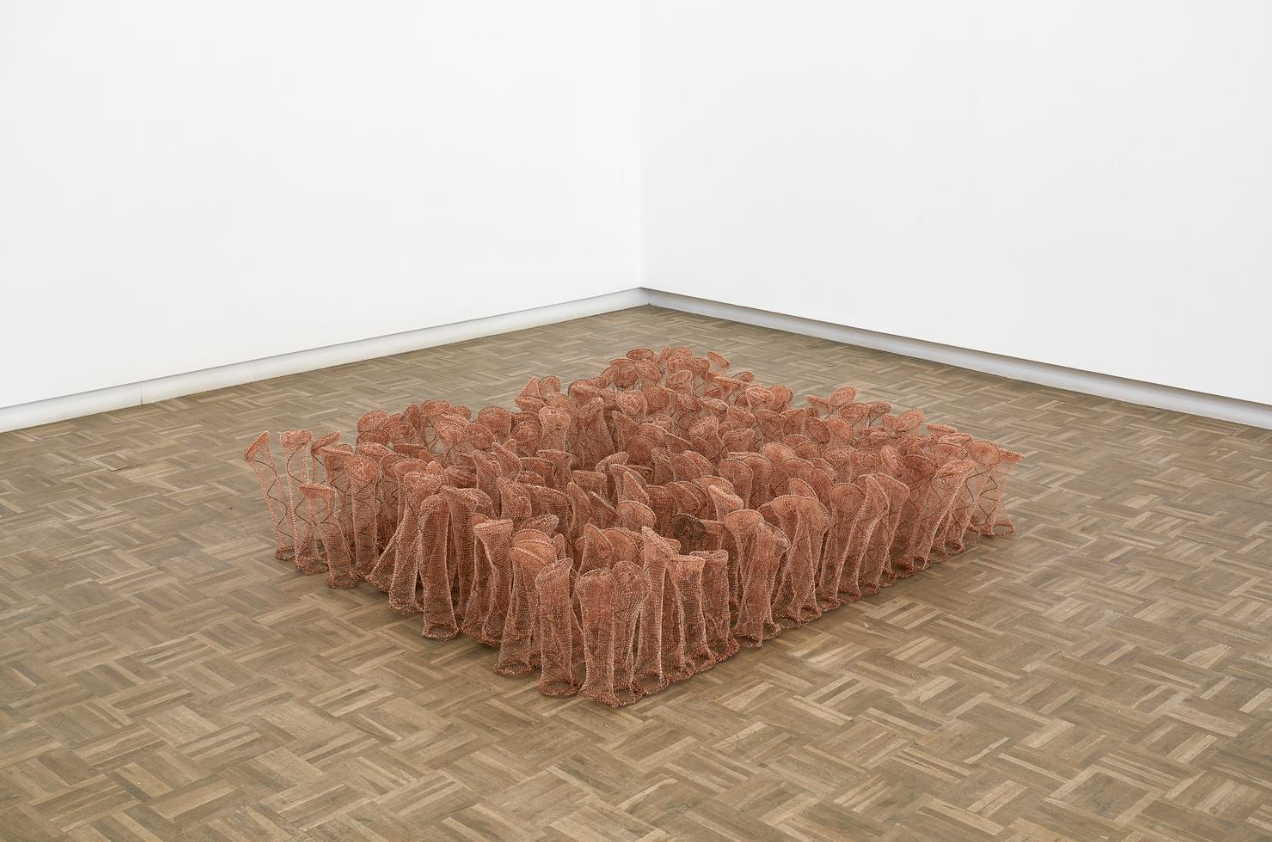 Bronwyn Katz, KÄXU-DA (1) (BECOME LOST US) (2019) | Salvaged bedsprings and copper wool, 173 x 138 × 40 cm, courtesy blank projects
Bronwyn Katz, KÄXU-DA (1) (BECOME LOST US) (2019) | Salvaged bedsprings and copper wool, 173 x 138 × 40 cm, courtesy blank projects
And what of the audience, once relegated to the velvet rope's exclusion? With the rise of citation, they become partners in the dance. Armed with smartphones and critical eyes, they trace invisible threads between artworks, unearthing hidden resonances. The echo of a familiar brushstroke in a contemporary canvas ignites a spark of understanding, a shared "aha!" moment that binds artist and viewer in a web of intertextuality.
So, as we navigate the art world in 2024, let us embrace the symphony of citation. Let curators build bridges, artists weave tapestries of influence, and audiences become active collaborators. For in this interconnected ecosystem, every reference opens a portal, welcoming new voices to the conversation.
- Who Cares?
The discourse surrounding care, its ethical dimensions, and its political implications has increasingly permeated the art world's collective consciousness. The global pandemic has not only amplified the urgency of these considerations but has also propelled them to the forefront of our collective reflection. Yet, one must critically examine whether this heightened awareness will catalyze tangible changes in the operational dynamics of our institutions and the fabric of our professional relationships.
In scrutinizing the concept of care through a meticulous lens, one is compelled to inquire how a thoughtful exploration of care can furnish transformative responses to the myriad challenges that afflict art institutions. It raises a poignant paradox—why are contemporary art institutions seemingly eager to engage in dialogues about care when, historically, they have been perceived as entities that often operate with a certain carelessness?
This query unravels a compelling conundrum: how can an art institution authentically embody and enact the ethos of care, not as a superficial discourse, but as a lived knowledge and a political imperative? In the realm of transformative practices, what methodologies can be employed to bridge the gap between rhetoric and praxis, enabling art institutions to manifest a genuine commitment to care in ways that resonate meaningfully within the intricate fabric of the art world?
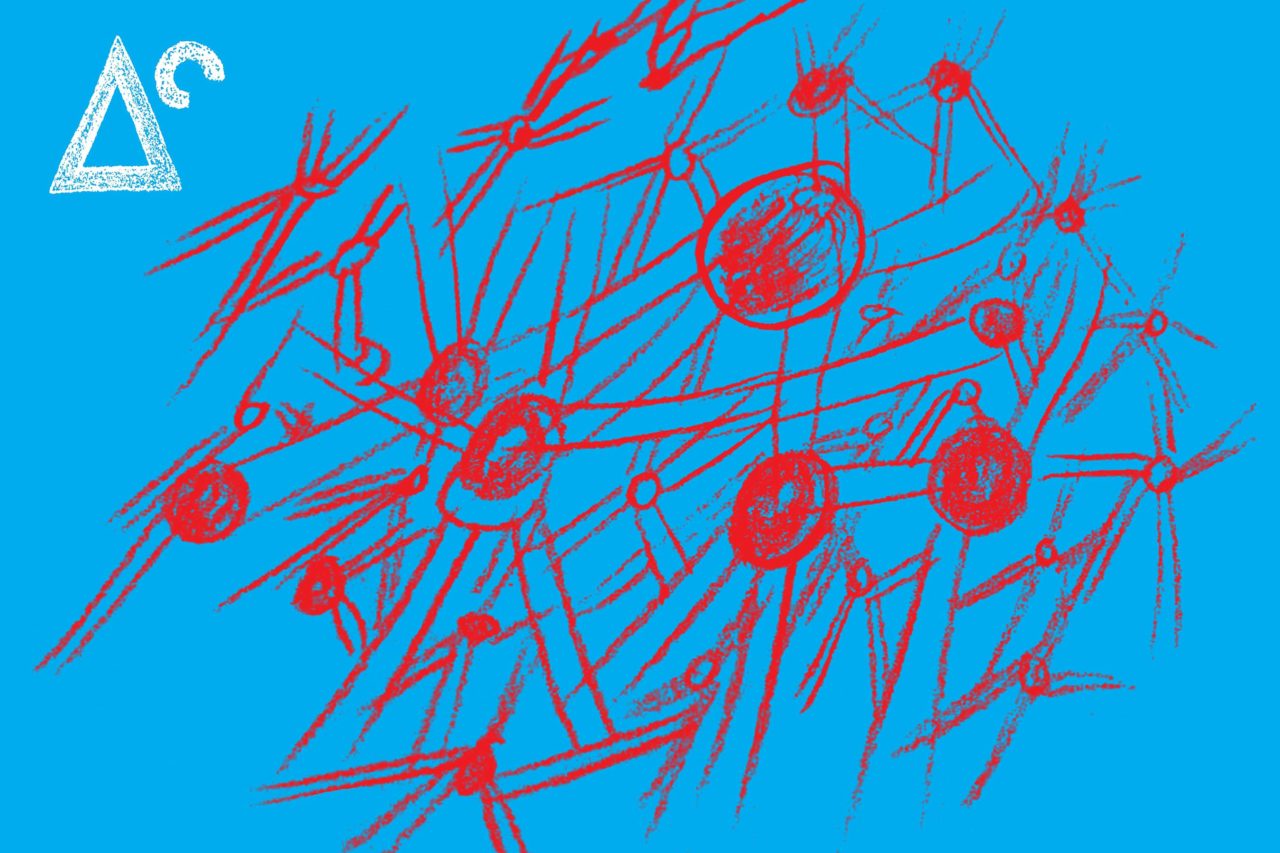 Arts Collaboratory, AC Ecosystem, drawing by Cráter Invertido, Mexico
Arts Collaboratory, AC Ecosystem, drawing by Cráter Invertido, Mexico
Forget the stale played out gallery models, old echoes of exclusion, 2024's art scene hums with a different tune - collaboration and empathy. Solo voices find their chorus, weaving tapestries of connection that resonate beyond sterile white cubes. "Care" isn't just a buzzword anymore, it's action. Institutions shed their ivory towers, opening their doors to diverse perspectives that enrich the artistic ecosystem, not just our galleries.
Sure, the world's messy, the dance floor crowded, but a spark of hope shines through. Let's keep weaving this vibrant future, stitch by stitch, brushstroke by brushstroke. Care is the rhythm, action, the music, and our art, not just a sentimental indulgence but a transformative tool, the radiant glow that lights the way. This year of shared stories and open doors is our canvas, let's paint a masterpiece of a future, together.
Further Reading In Articles
African Artist Directory















